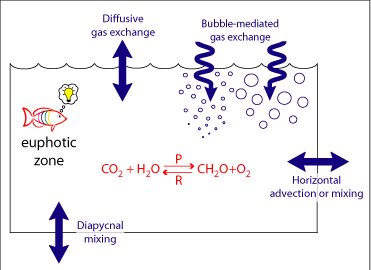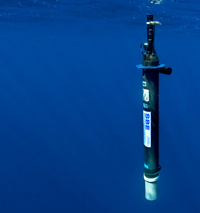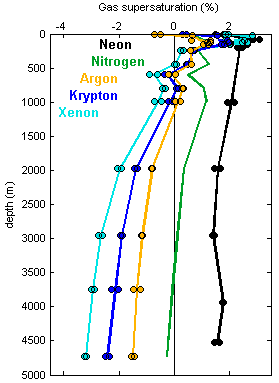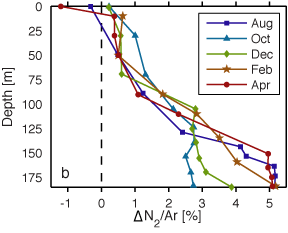Ocean Gases Lab Research Projects:
The UVic Ocean Gases Lab makes highly precise measurements of gases dissolved in seawater and freshwater. Every gas in the atmosphere is also found dissolved in natural waters and their concentrations can be a useful clue to important processes such as air-sea gas exchange and biological productivity. In particular, the oceanographic community is focussed on dissolved carbon dioxide and oxygen levels. The ocean is the largest reservoir of carbon dioxide on short timescales, so it has a strong control on atmospheric levels and climate change. Oxygen in the interior ocean is decreasing in many regions, affecting fish populations and other marine life.
To understand the concentrations of dissolved gases like oxygen and carbon dioxide, we need to consider all the processes that can affect those concentrations. In addition to biological like photosynthesis and respiration, the concentration of every dissolved gas is affected by physical processes. As depicted in the figure to the right, these physical processes include the exchange of gases between the ocean and the atmosphere, and mixing between different water masses. The rate at which waters warm and cool (which change the gas's solubility) is also a key controlling process. To separate out the effects of these many processes on gas cycles, our group makes measurements of a large suite of inert gases such as neon, argon, krypton, and xenon, as well as gases like oxygen and nitrogen. Depending on their chemical properties, each gas is more or less sensitive to the different processes that interest us.

Processes that affect dissolved gases.


